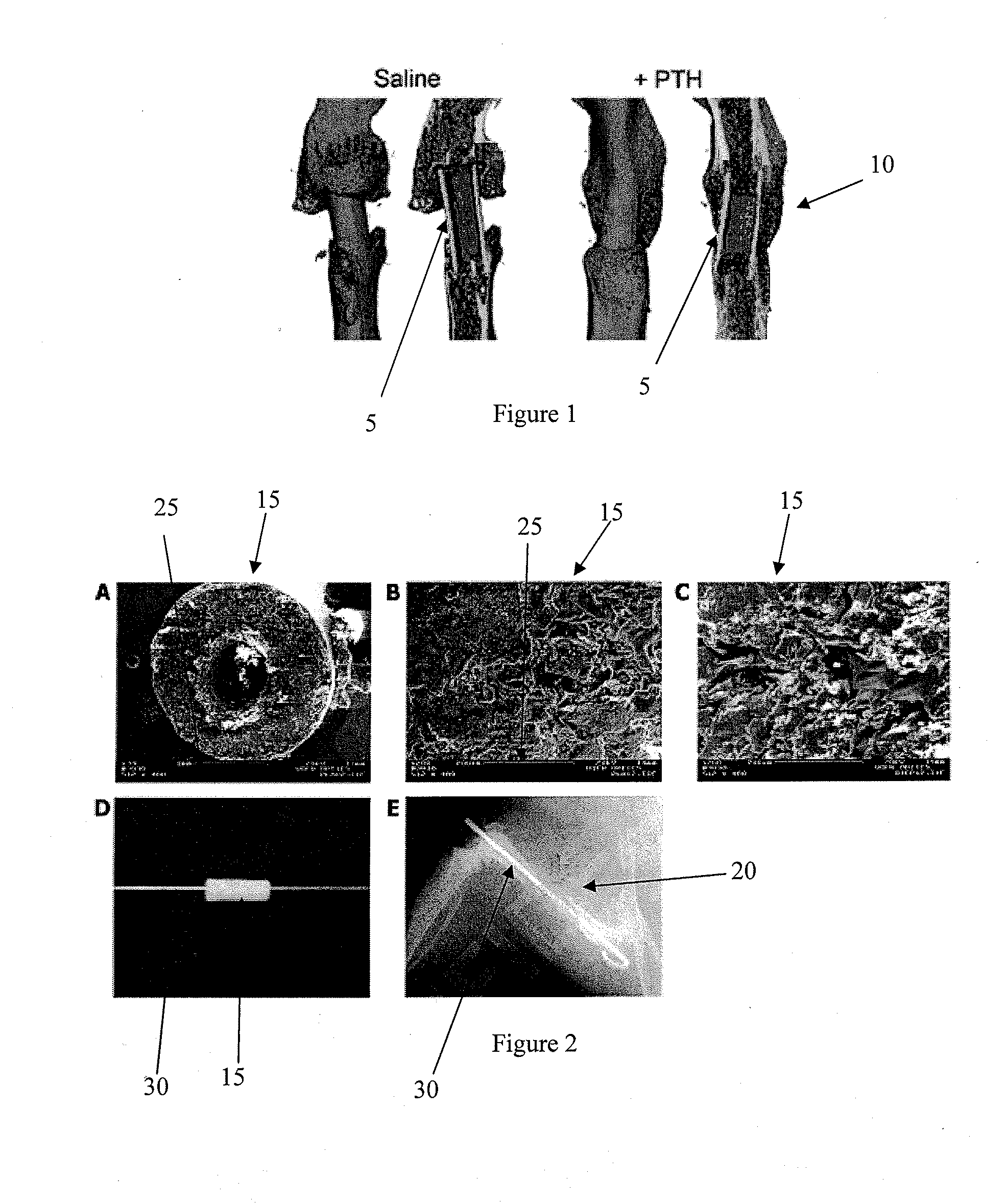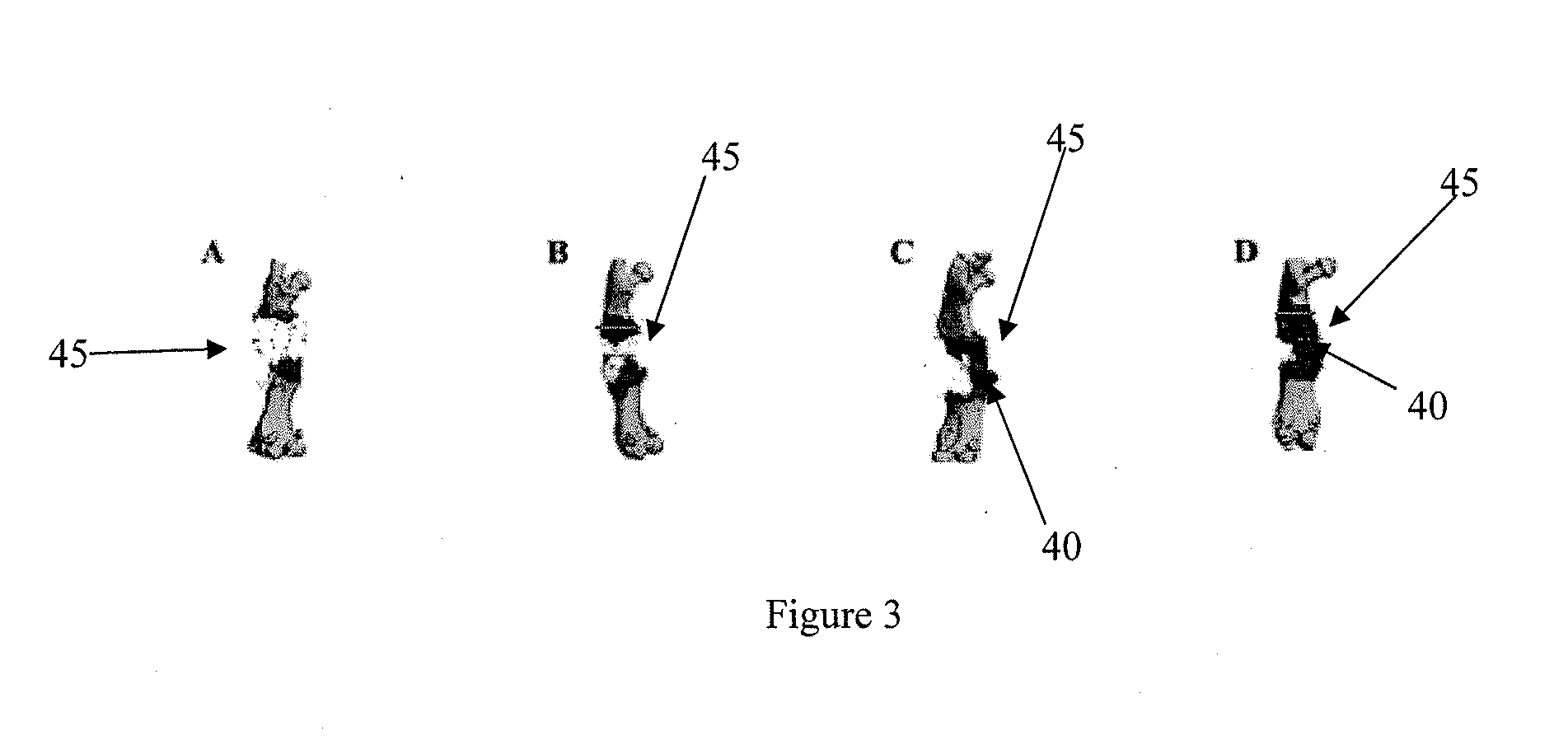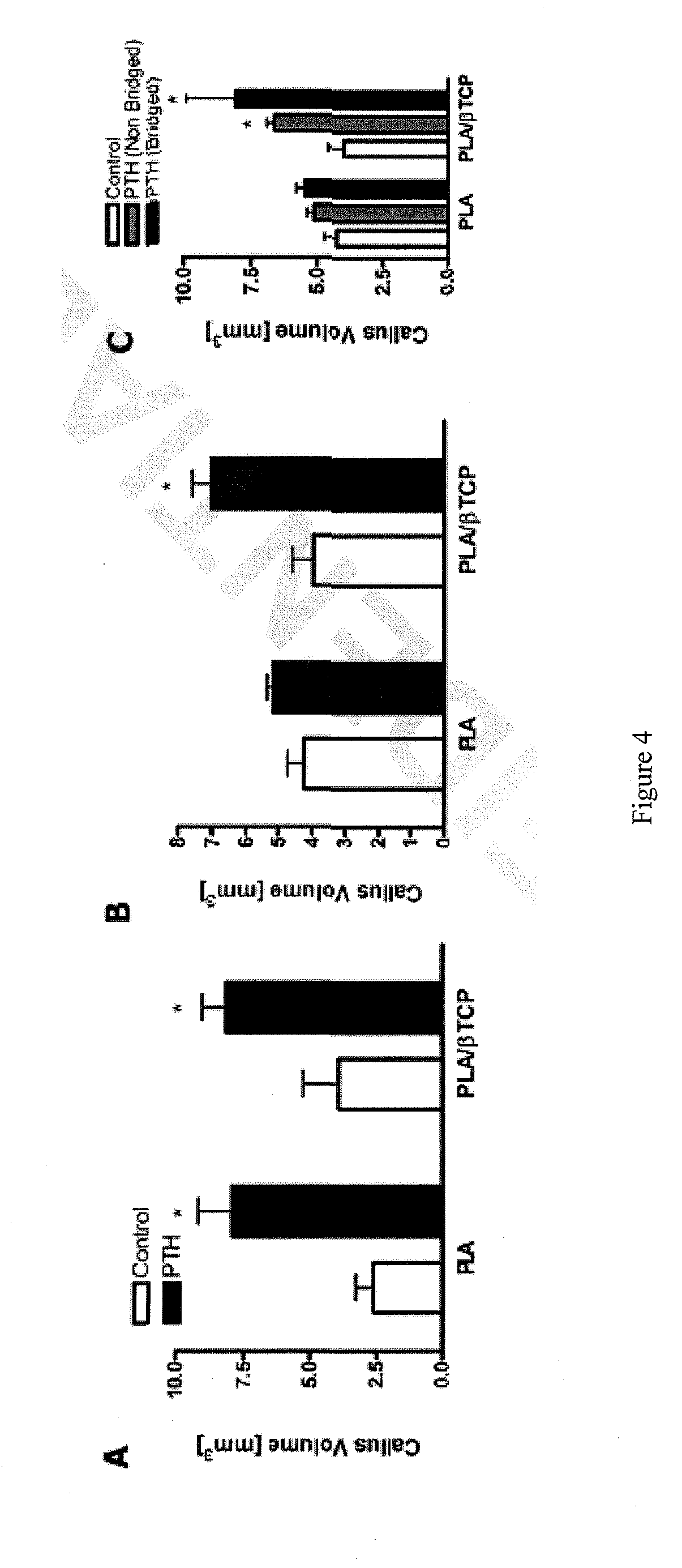Parathyroid hormone treatment for enhanced allograft and tissue-engineered reconstruction of bone defects
a bone defect and parathyroid hormone technology, applied in the direction of drug compositions, peptide/protein ingredients, metabolic disorders, etc., can solve the problems of limiting the survival half-life of allografts, high failure rates, etc., to reduce the risk of pre-union and early union failure, increase bone brittleness, and increase bone stiffness
- Summary
- Abstract
- Description
- Claims
- Application Information
AI Technical Summary
Benefits of technology
Problems solved by technology
Method used
Image
Examples
example 1
Intermittent Systemic PTH Treatment Enhances Bone Allograft Healing
[0074]This example demonstrates significant anabolic effect of PTH on structural bone allografts, showing substantial improvements in the amount of callus bone formation and graft incorporation resulting in improved union between the host and graft.
Materials and Methods:
[0075]Femoral allograft surgeries were performed on C57B1 / 6 mice as previously described [3]. Briefly, a 4 mm mid-diaphyseal segment was removed by osteotomizing the femur and a processed allograft was implanted and secured in place with a stainless steel intramedullary (IM) pin. After 1 week, 8 mice were given daily subcutaneously injections of 0.4 mg / kg PTH (1-34) (Forteo, Eli Lilly and Company, Indianapolis, Ind.) while 5 mice with grafts were given the same volume of saline daily, serving as controls. Animals were sacrificed 6 weeks after surgery, the grafted femurs were carefully dissected and cleaned without disrupting the callus, and th...
example 2
Intermittent, Systemic PTH Treatment Augments Tissue Engineered Reconstruction of Critical Femoral Defects
[0083]This example shows that PTH treatment increased bone regeneration and increased the volume of the mineralized callus regardless of the scaffold type used.
[0084]As shown in FIG. 2, an 85:15 PLA / βTCP (PLA) scaffold 15 (panel A; scale bar 100:0 represents 1 mm) was used for bone defect reconstruction. High power SEM images of the scaffold 15 are shown in FIG. 2, panels B and C. (scale bars 25 in B & C represent 200 microns. Arrow head in panel C points to βTCP particles). Titanium pins 30 were passed through the lumen of the scaffolds 15 (panel D) to be used for fixation of the scaffolds when implanted as standalone femoral graft substitutes in critical 4 mm femoral defects in our previously established mouse model (see Example 1). The grafted animals were either treated with daily (5 days / week) injections of PTH or left untreated (Controls). Radiographic image of a PLA scaff...
example 3
Micro-CT-Based Measurement of Cortical Bone Graft-to-Host Union
Materials and Methods:
[0090]4-mm intercalary defects in C57B1 / 6 mouse femurs were reconstructed using either the live cortical bone graft from the same mouse (autograft) or a devitalized bone graft from a donor mouse (allograft) and secured in place with an intramedullary pin. Only mice that were sacrificed at 6 weeks (n=7 autografts and 8 allografts) or 9 weeks (n=12 autografts and 7 allografts) after surgery were included in this study. Femurs were disarticulated from the hip and knee joints and the intramedullary, stainless-steel pins were removed carefully. Specimens were moistened with saline and frozen at −20° C. until thawed for micro-CT imaging and subsequent biomechanical testing.
[0091]Specimens were scanned at 13.9 micron resolution using the Explore Locus SP scanner (GE Healthcare Technologies, London, ON) at 80 kVp and 80 mA with 415 projections of 1700 ms integration time. GE MicroView soft...
PUM
| Property | Measurement | Unit |
|---|---|---|
| axial length | aaaaa | aaaaa |
| axial length | aaaaa | aaaaa |
| axial length | aaaaa | aaaaa |
Abstract
Description
Claims
Application Information
 Login to View More
Login to View More - R&D
- Intellectual Property
- Life Sciences
- Materials
- Tech Scout
- Unparalleled Data Quality
- Higher Quality Content
- 60% Fewer Hallucinations
Browse by: Latest US Patents, China's latest patents, Technical Efficacy Thesaurus, Application Domain, Technology Topic, Popular Technical Reports.
© 2025 PatSnap. All rights reserved.Legal|Privacy policy|Modern Slavery Act Transparency Statement|Sitemap|About US| Contact US: help@patsnap.com



